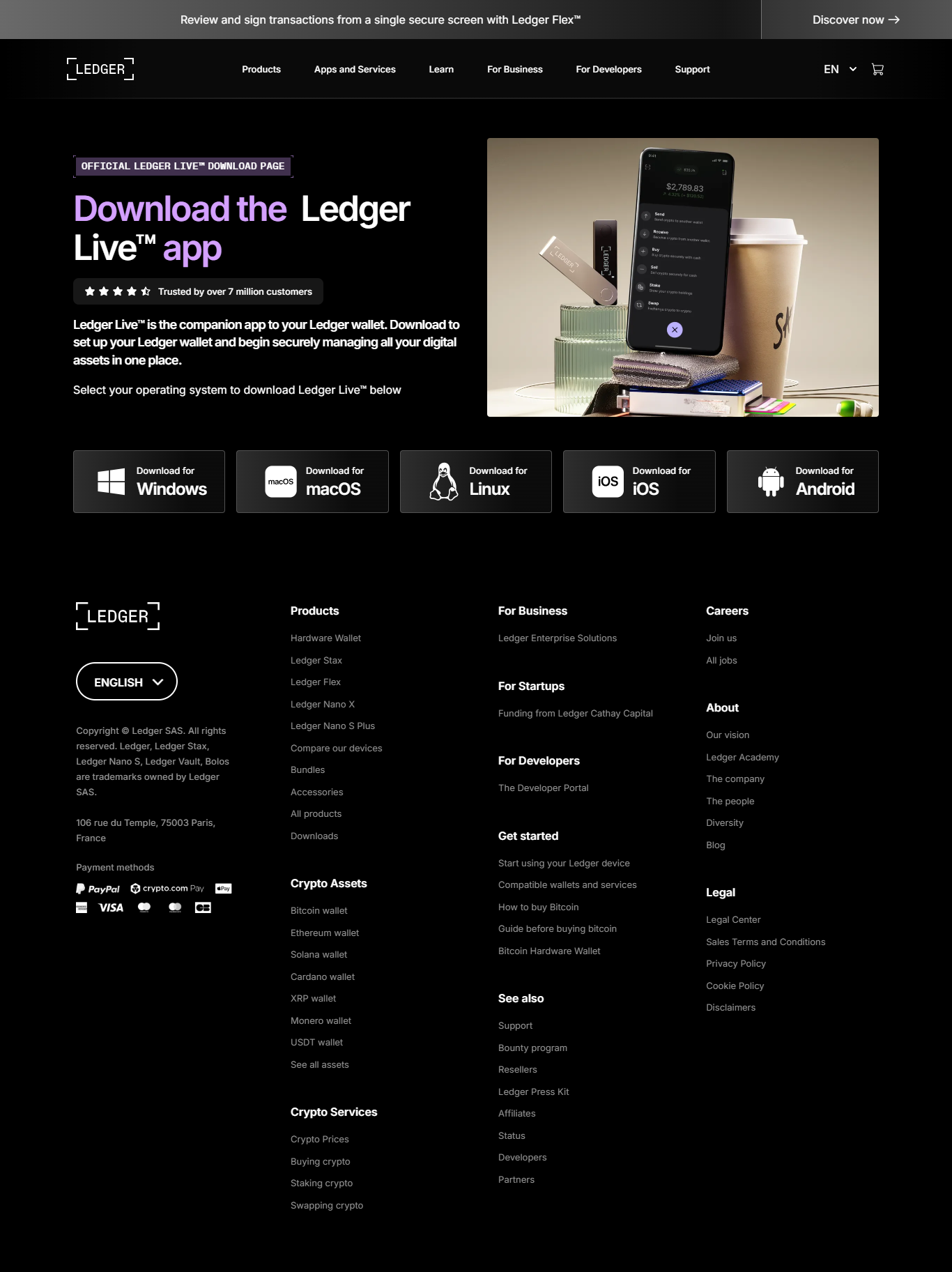
Guide This article explains how the Ledger Live App helps you securely manage cryptocurrency, why Ledger Live matters for self-custody, and practical tips to keep your Ledger Live experience safe.
Ledger Live is a desktop and mobile application designed to let you view balances, send and receive crypto, and manage apps on your device. Ledger Live provides a single interface that connects to your Ledger hardware wallet so Ledger Live never stores your private keys — your Ledger device holds those keys offline.
To begin using Ledger Live, download the official Ledger Live installer from the manufacturer and open the Ledger Live app. When Ledger Live launches, follow on-screen prompts to check firmware and add accounts. Ledger Live pairs with your Ledger hardware wallet to sign transactions locally; the Ledger Live application coordinates the flow while the Ledger device signs securely.
Ledger Live supports multiple blockchains and tokens, portfolio tracking, built-in swap and staking integrations, and a clear transaction history. Ledger Live also provides firmware update notifications and app management so you can install only the blockchain apps you need on your Ledger device. Using Ledger Live means your keys remain on the hardware device while Ledger Live handles the user interface.
When you use Ledger Live, follow these security basics: always verify transaction details on the Ledger device screen, never share your recovery phrase, and keep your computer and mobile OS up to date. Treat Ledger Live as the user-facing layer and the Ledger device as the secure signer — confirm every action on the physical device, not just in the Ledger Live app.
Here’s a short checklist to keep Ledger Live usage secure: set up your Ledger device in a private location, record the recovery phrase on paper (never digitally), validate app and firmware sources before installing via Ledger Live, enable a PIN on the Ledger device, and review each transaction on the device screen rather than only trusting Ledger Live’s on-screen summary.
Ledger Live allows adding accounts for Bitcoin, Ethereum, and many other blockchains. Within Ledger Live you can add accounts per blockchain and track combined portfolio value. Ledger Live keeps account data (like public addresses and balances) on your computer or phone but signs transactions via the Ledger device — maintaining separation between interface and key storage.
Ledger Live aims to be privacy-respecting, but be mindful that transaction data is public on blockchains and that Ledger Live may query external services to show prices and market data. If privacy is critical, configure Ledger Live settings to minimize data sharing and consider using tools that reduce metadata leakage when broadcasting transactions alongside Ledger Live.
If Ledger Live does not detect your Ledger device, first ensure the USB cable is data-capable and the device is unlocked. Restart Ledger Live and the device, confirm any firmware or app updates via Ledger Live, and check OS USB permissions. If problems persist, consult official support resources rather than third-party installers — keep Ledger Live and Ledger device firmware official and up to date.
Ledger Live offers a practical balance of usability and security: it makes managing multiple coins easier while delegating sensitive signing to your Ledger hardware wallet. Follow the security habits above, keep both Ledger Live and your hardware updated, and always prioritize verifying transaction details directly on your Ledger device screen.